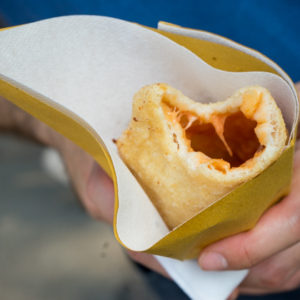The Italian Larder
Search by alphabet:
A B C D E F G H I J K L M N O P R S T U V W Y Z
Date Mussel – See Mussels
Dattero di mare – See Mussels
Dentex – See Fish: Dentex
Dentice – See Fish: Dentex
Dolphin fish – See Fish: Mahi- Mahi
Dotto – See Fish: Grouper
Drum, shi – See Fish: Shi drum
Dublin Bay prawn – See Lobster
Duck (Anatra)
Ducks can be domesticated or wild. Varieties of domesticated ducks in Italy include the muscovy / barbary duck (Anatra muta/Muschiata), domestic duck (Commune/Nostrana), and Peking (Pechino) duck. Of these, the most prized for the strong flavour of the meat is the Muscovy, although the Peking duck is prized for its thin skin. Varieties of Italian wild ducks include the Mallard (Germano reale), Garganey (Marzaiola), Eurasian teal (Alzavola), Northern pintail (Codone), Northern shoveler (Mestolone), Eurasian wigeon (Fischione), Common pochard (Moriglione), and the Tufted duck (Moretta).
Buy: The best quality duck is a fresh, free-range duck. Domesticated female ducks tend to be about 6 days old and weigh 1.3 to 1.4 kilos (without the head or feet). Domesticated male ducks tend to be about 75 days old and weigh about 3 kilos. You can tell the age of a duck by the flexibility of its beak. The young domesticated duck’s beak is can be slightly impressed by your thumbnail and the wild duck’s beak should be very flexible to be considered young enough for cooking purposes. Younger ducks will have more tender meat but be careful that there is enough meat on the carcass. Ducks freeze well as they have a high fat content. For cuts, see Chicken.
Store: Duck can be stored wrapped, in a container, to contain any juices on the bottom shelf of the refrigerator at 5˚C for 1 to 2 days. If your time requirement is longer than this, the duck can be frozen at -18˚C and then thawed when needed. Cuts of duck can be stored, well-sealed in thick freezer bags, in the freezer for up to 9 months and whole duck for up to 1 year. If the meat begins to show signs of grey, white or brown patches on the meat, it is developing freezer burn and is dehydrating. It is still edible but will be dry and not taste nice.
Prepare: When preparing duck, the liver, heart and gizzard can be retained and used in another dish. Some preparations for roast duck call for the duck skin to be pricked with a fork beforehand so the duck fat can drain out (save this fat to roast potatoes). Duck legs and thighs need to be cooked longer than the breasts which can be cooked rare (still pink in the centre) so sometimes they are cooked separately.
Eat: Duck is roasted (anatra arrosto), baked, in casserole (anatra con le lenticchie), braised (anatra brasato and anatra all’arancia), stewed (anatra in salmi), grilled, stuffed (anara col pien), pan-fried, spit-roasted, or in pasta sauce (bigoli con anatra). Young ducks can be dry cooked: roasted, grilled, pan-fried, or spit-roasted but older ducks and all wild ducks, except the very young, cannot and must be cooked in liquid. Duck pairs well with oranges, onions, prunes, morello cherries, peas, green olives, and red wine.






Leave a Reply